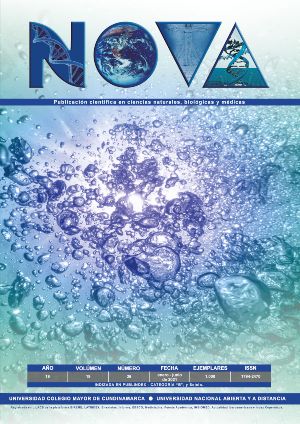NOVA por http://www.unicolmayor.edu.co/publicaciones/index.php/nova se distribuye bajo una licencia Reconocimiento No Comercial- Compartir igual
Así mismo, los autores mantienen sus derechos de propiedad intelectual sobre los artículos,
Declaración de privacidad.
Los nombres y las direcciones de correo electrónico introducidos en esta revista se usarán exclusivamente para los fines establecidos en ella y no se proporcionarán a terceros o para su uso con otros fines.
Bacteria, nutrition and growth: a look from chemistry
Nutrition is a set of processes and reactions by which living beings take from the environment, in which they inhabit, the chemical substances they need to grow, multiply and make use of energy.
The aforementioned substances are called nutrients and are used for two purposes: energetic when required for maintenance and biosynthetics when required for the synthesis of components (anabolism). In the first case (energetic) the bacteria are divided into lithotrophs when they make use of simple inorganic substances such as (SH2, S, NH3, NO2-, Fe, among others); and organotrophs when their requirement is for organic substances (carbohydrates, hydrocarbons, lipids, proteins and alcohols, among others). In the second case (biosynthetics), they can be differentiated into: autotrophs, when the synthesis is carried out from simple inorganic substances (CO2) and heterotrophs when their carbon source is organic, but they can also use other elements than C, which they can be captured in inorganic form. Whether autotrophic or heterotrophic, all bacteria require a series of chemical substances, which can be classified into macronutrients or micronutrients according to the amount of these required of these substances that are required.









